Travel
Here’s why Ethiopia is the newest addition to your travel bucket list
With a rich culture and history (including significant archeological discoveries), this Cradle of Mankind is a destination you should want to visit.

If a country’s unique way of life and history is what gets you going, you have lots to get excited about in Ethiopia. What is remarkable about this empire on the Red Sea in northeastern Africa, is its cultural heritage, being home of the Ethiopian Orthodox Church, considered one of the oldest Christian churches in the world.

Gondar, famous for being home to many emperors, warlords, kings and courtiers, is home to Fassil Ghebbi, a palace founded by Emperor Fasilides in the 17th century. (Photo courtesy of Wikimedia Commons)
Apart from a five-year occupation by Mussolinis’ Italy, it has never been colonized and the monarchy ended only in the coup of 1974. But to fully experience and understand Ethiopia’s distinctive culture and history, the best way is to visit the various sites that dot the region. From museums and castles that define its origin, to exciting tours and townships and quaint villages, there’s lots to see and do. Upon arrival we were met by Henok Tsegave, a knowledgeable tour guide who promised everyone an unforgettable experience in Ethiopia. And we were more than eager to start our adventure.
Addis Ababa is the capital city of Ethiopia and Africa’s undisputed diplomatic headquarters of the African Union. Interesting sights include the merkato, the sprawling market that’s home to anything and all things Ethiopian that you’d ever want to purchase, from pungent spices, to other interesting paraphernalia. Centrally located is the Radisson Blu Hotel which sets new standards for the discerning travellers. Combining excellent service with ultra-modern rooms, a world-class restaurant and a well-equipped business center makes Radisson a perfect base from which to explore Ethiopia and its neighboring towns.

the National Museum of Ethiopia, located in the capital city of Addis Ababa, houses a collection of Ethiopian art, including weapons, clothing and other cultural artifacts. (Photo courtesy of Wikimedia Commons)

The National Museum’s most popular piece is Lucy, a skeleton of the female of the Australopithecus afarensis, dated 3.2 million years ago. Discovered in the 1970s, it acquired its name from The Beatles song, Lucy in the Sky with Diamonds. (Photo courtesy of Wikimedia Commons)
The National Museum houses artistic treasures as well as many of the most precious archeological finds such as the fossilized remains of early hominids the most famous of which is “Lucy”, the partial skeleton of a specimen considered to be the earliest child. Why Lucy? Interestingly while the fossils were dug, the popular Beatles song entitled Lucy in the Sky With Diamonds was being played repeatedly.
Lalibela (The Eight Wonder of the world) is a town on the north famous for monolithic rock-cut churches and is considered one of Ethiopia’s holiest cities. Each church was carved from a single piece of rock to symbolize humility and spirituality. It has been said that they were built with the help of angels, as they are exquisitely chiseled in the stone.
Among the churches we visited was Bete Medahine Alem, House of the Redeemer which is the largest with a vaulted dome, four aisles and 72 pillars. Bete Maryam, House of St. Mary is the most decorated among the rock hewn churches. Isolated from the others and undoubtedly the most famous is Biete Ghiorgis, the Church of St. George which is carved like a cross out of the red rock. The interior has no pillars, but four cross-shaped posts are connected to the central part. All the eleven churches in Lalibela are UNESCO World Heritage Sites and represent a unique artistic achievement, in their execution, size and the variety and boldness of their form.

The Bete Giyorgis, or The Church of Saint George, is one of eleven monolithic churches in the holy city of Lalibela. Also a part of the UNESCO World Heritage Site, the church is made from a type of limestone called tufa and is famous for being carved like a cross. (Photo courtesy of Wikimedia Commons)
Gondar, the 17th century capital of Ethiopia and popularly called the Camelot of Africa was home of many Emperors and warlords, kings and courtiers who led the country from the 12th century to the last decade of the 20th century. Unfortunately, several historical buildings were damaged by British bombs during Ethiopia’s liberation campaign of 1941. Nevertheless, most of the famous castles and imperial buildings survived the ravages of time and form one of Ethiopias’s most captivating antiquities.
Bahar Dar, the third largest city in Ethiopia is situated on the southern shore of Lake Tana, the source of the Blue Nile, the longest river in Africa. Its main attraction is the selection of Ethiopian Christian monasteries which are found on some 20 of Lake Tana’s 37 islands. The monasteries date from the 16th and 17th centuries and have changed little since their founding. They are simple huts decorated with colorful scenes from the Bible and lives of the saints.
Ethiopians are a creative bunch and everywhere you go, something colorful and striking will catch your eye. Whether it is the beautiful crosses and other religious objects masterfully created by silversmiths, or the intricate beaded works made by the local women , there’s plenty to choose from. What’s more, the arts and crafts are totally inspired by their past and include unique offerings like wall-hangings, basketry, etchings and other outstanding selections.

Mentewab Castle, located within Fasil Ghebbi in Gondar, is a castle dedicated to the Empress of Ethiopia. (Photo courtesy of Wikimedia Commons)
So how does one get there to experience the many exciting and exotic adventures? Ethiopian Airlines, Africa’s largest airline and aviation technology leader, recently welcomed its 787 Dreamliner, a new-generation Boeing aircraft, that services the Manila-Addis Ababa route. It has won several awards for its exceptional international services playing a significant role in connecting Africa to the rest of the globe.
Ethiopian Airlines flies to Addis Ababa from Manila with a brief stop in Bangkok three times a week. To celebrate the launch of its Dreamliner service to Manila, Ethiopian Airlines offers special round trip prices for both economy and business class.
Today’s Ethiopia is more than a must-visit destination. It’s transcendent and magical with a flair found nowhere else in the world, a spirit as expansive as the landscape with many opportunities and lots of soul. Go fly and enjoy it.
Lifestyle
Find Your Summer Spirit in Shangri-La Mactan, Cebu

Breathe in the tropical atmosphere, as you find summer joys through sight, sound and taste at Shangri-La Mactan, Cebu. Poolside fun during the day, spent serenely and luxuriantly—a refreshment in hand. While the evenings are for outdoor family movie nights, with the ocean waves rippling in the background.
Summer is all of that, and more! Plan an extraordinary weekend with an array of exciting activities that await your arrival. Discover your #ShangriLaSummerSpirit from 15 July to 30 August.
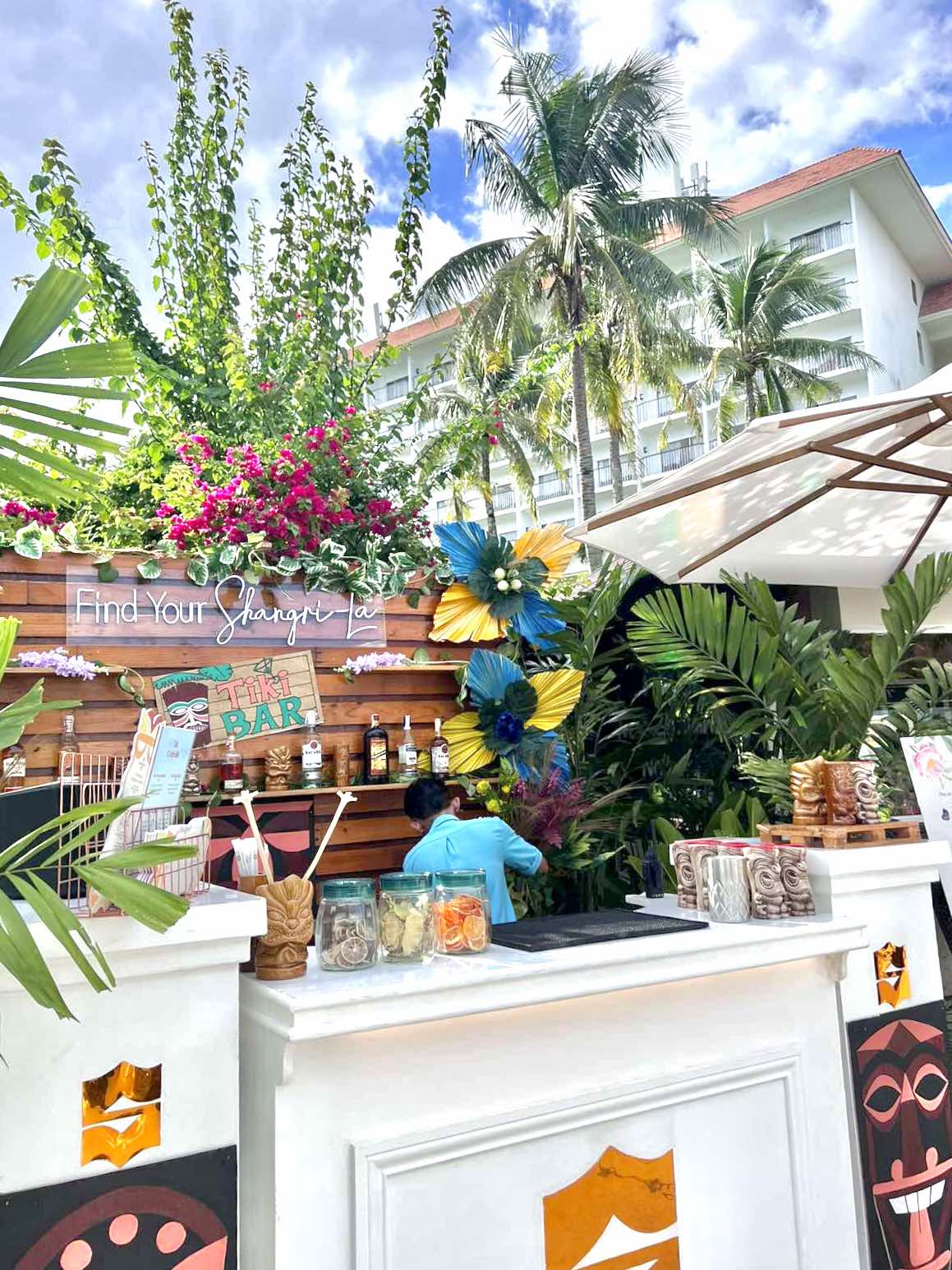
Tiki Bar at Buko Bar
Epicurean Delights by the Pool
Keep yourself fueled up as you splish and splash with the whole crew. Take a quick break from all that summer jazz with Mediterranean and Polynesian-inspired bites exquisitely crafted for your palate. From rice balls and pastas, ice creams to sliders—indulge in tastes and aromas that transport you to a world of endless, golden summers.

Mediterranean Selections at Acqua
A Whimsical Touch
Make it a colourful summer for the kids! Let them explore their own version of paradise with whimsical floaties, sure to keep them happily afloat. Your little ones can now freely kick and play in the water with fun and fascinating, animal-shaped inflatables.
Pleasant Sundowner Tunes
Bid the sun adieu and embrace the sunset hues with live acoustics at the Main Pool from 4pm to 6:30pm.

Tiki Cocktails at Buko Bar

Champagne Bar at Acqua
A Toast to an Endless Summer!
Unwind and savour the tropical vibe as our expert mixologists craft refreshing Tiki cocktails and serve chilled bottles of exquisite champagne by the pool! With a backdrop of swaying palm trees and stunning ocean views, sip on delightful beverages and toast to unforgettable summer moments in paradise.
Family Outdoor Movie Night
Gather your nearest and dearest for an enchanting evening as we set up a large outdoor screen by the pool under the starry night sky. Cozy up as you enjoy a family-friendly movie that will delight both those who are young and young-at-heart at Treasure Island from 7pm to 9pm.

Surrounded by lush greens, let the experience bring you to a world of joy and laughter, creating cherished memories for you and the family. For more information on Shangri-La Mactan, Cebu, you may contact (032) 2310288. You may also follow them on Facebook and Instagram or visit https://www.shangri-la.com/cebu/mactanresort/ #FindYourSummerSpirit #FindYourShangriLa
inside
LONDON IN FULL BLOOM: An Exclusive Look at the recent Chelsea Flower Show
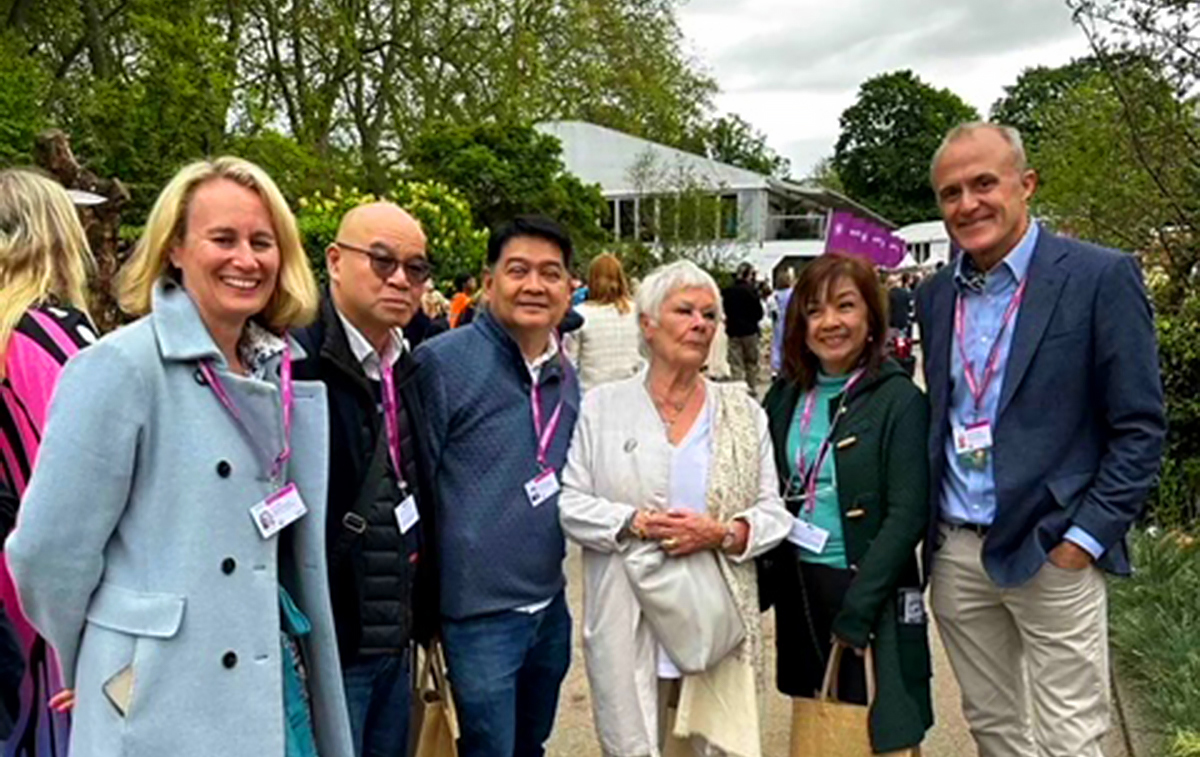
The Chelsea Flower Show in London, one of the most prestigious horticultural events in the world, returned in full glory in May 2023, captivating visitors with its stunning displays and landscape designs. Held annually on the grounds of the Royal Hospital Chelsea in London, this year’s show proved to be a true feast for the senses, showcasing an array of breathtaking gardens, vibrant floral arrangements, and innovative landscaping. The 3-day event showcased 36 outdoor gardens, including four balcony gardens for small spaces. Inside the giant pavilion, blooms compete with each other, exotic flowers, roses, and many more.

Princess Kate Middleton walking the booths at the Chelsea Flower Show.
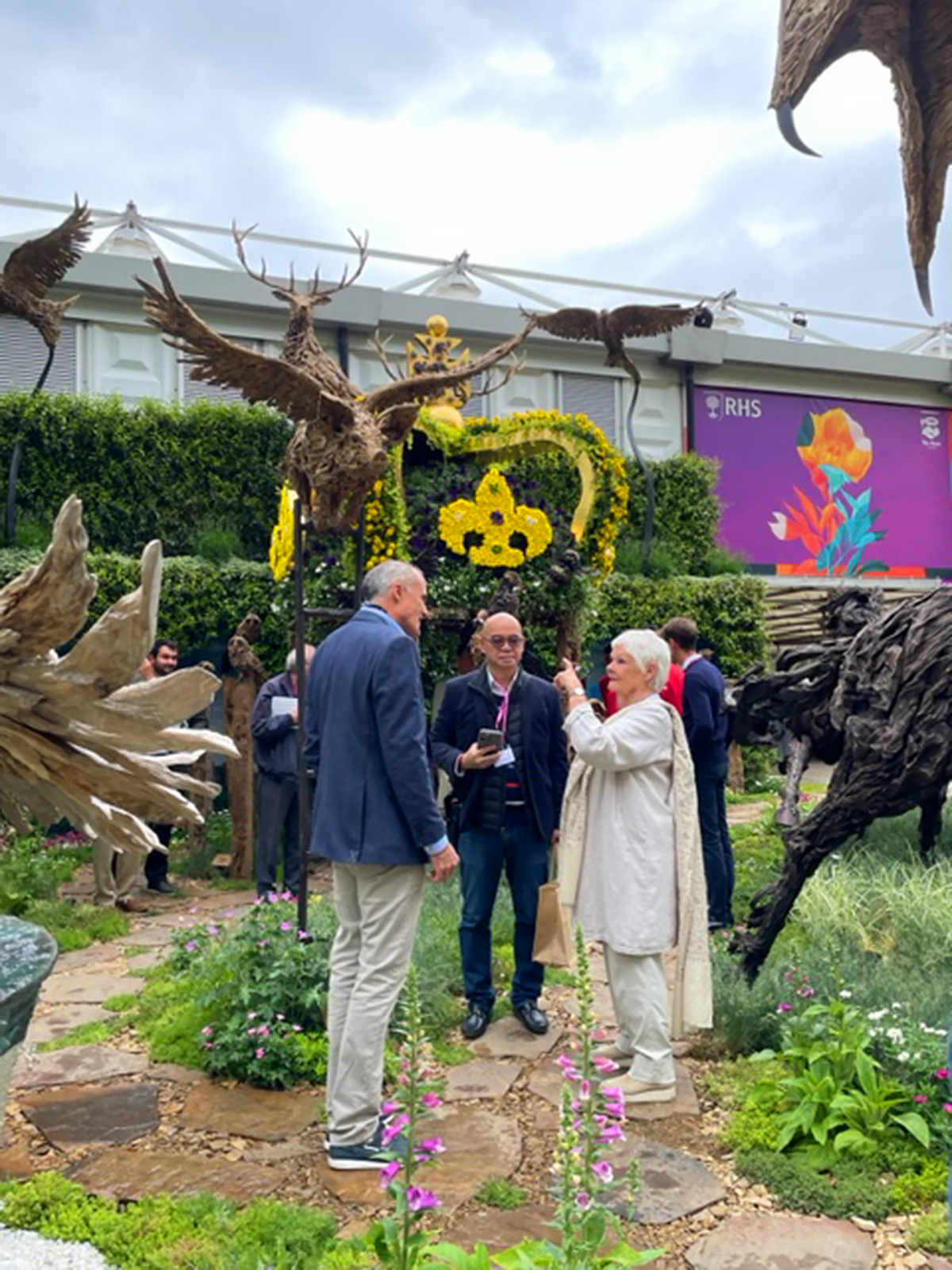
Dame Judy Dench, who owns several of Webb’s pieces in her garden, with James Doran-Webb and Jerry Sibal discussing the works of James.
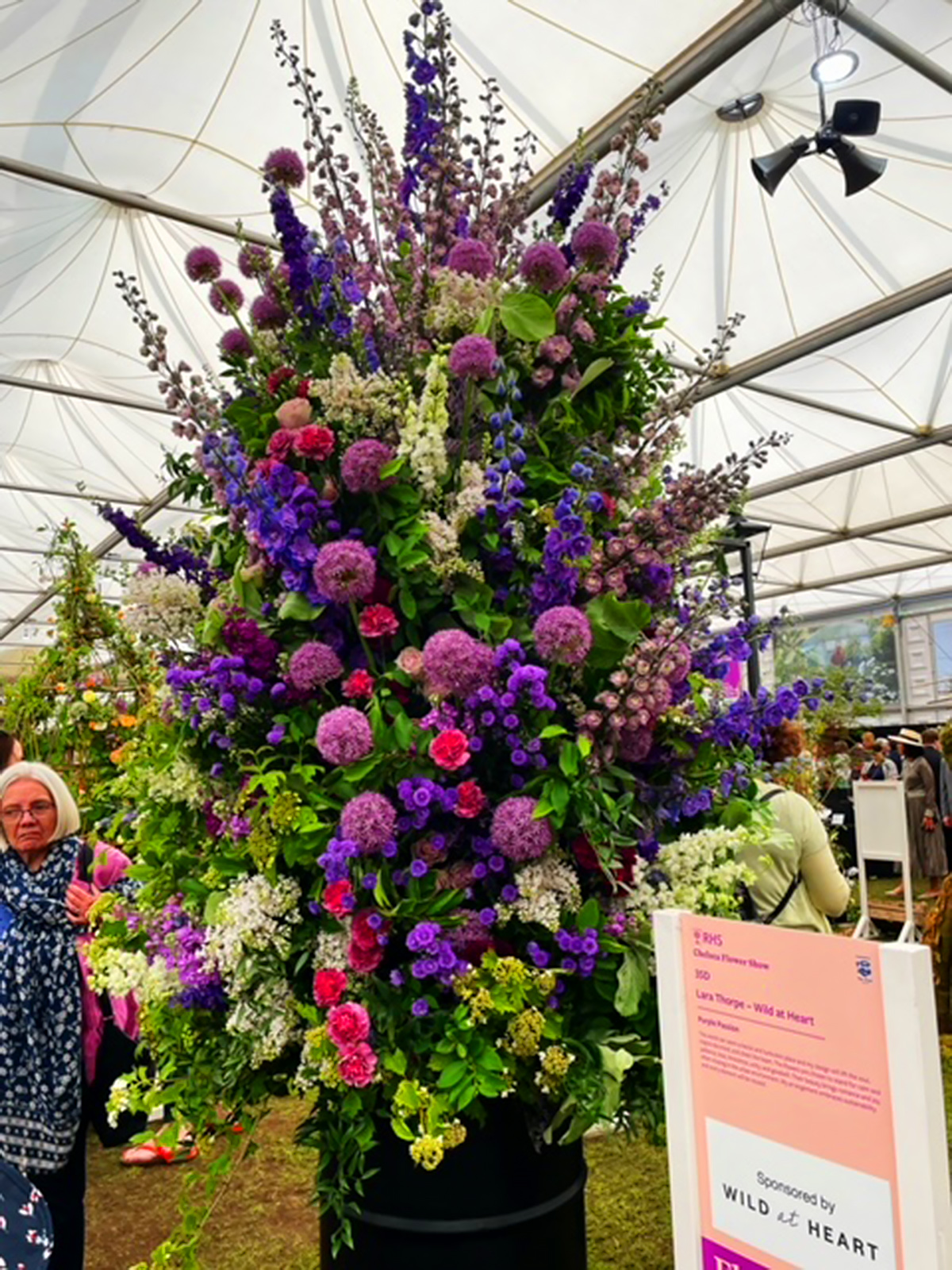
One of the flower arrangements competing at the show.
The 2023 Chelsea Flower Show embraced a Nature’s Harmony theme, with a strong focus on sustainability and mental health. The show’s organizers emphasized the importance of sustainable gardening practices and biodiversity conservation, inspiring attendees to create beautiful outdoor spaces while preserving and protecting the environment.

One of the floral gazebo displays recycled chairs and salvaged materials.

Shops at the Chelsea Flower Show are mostly from sustainable materials.
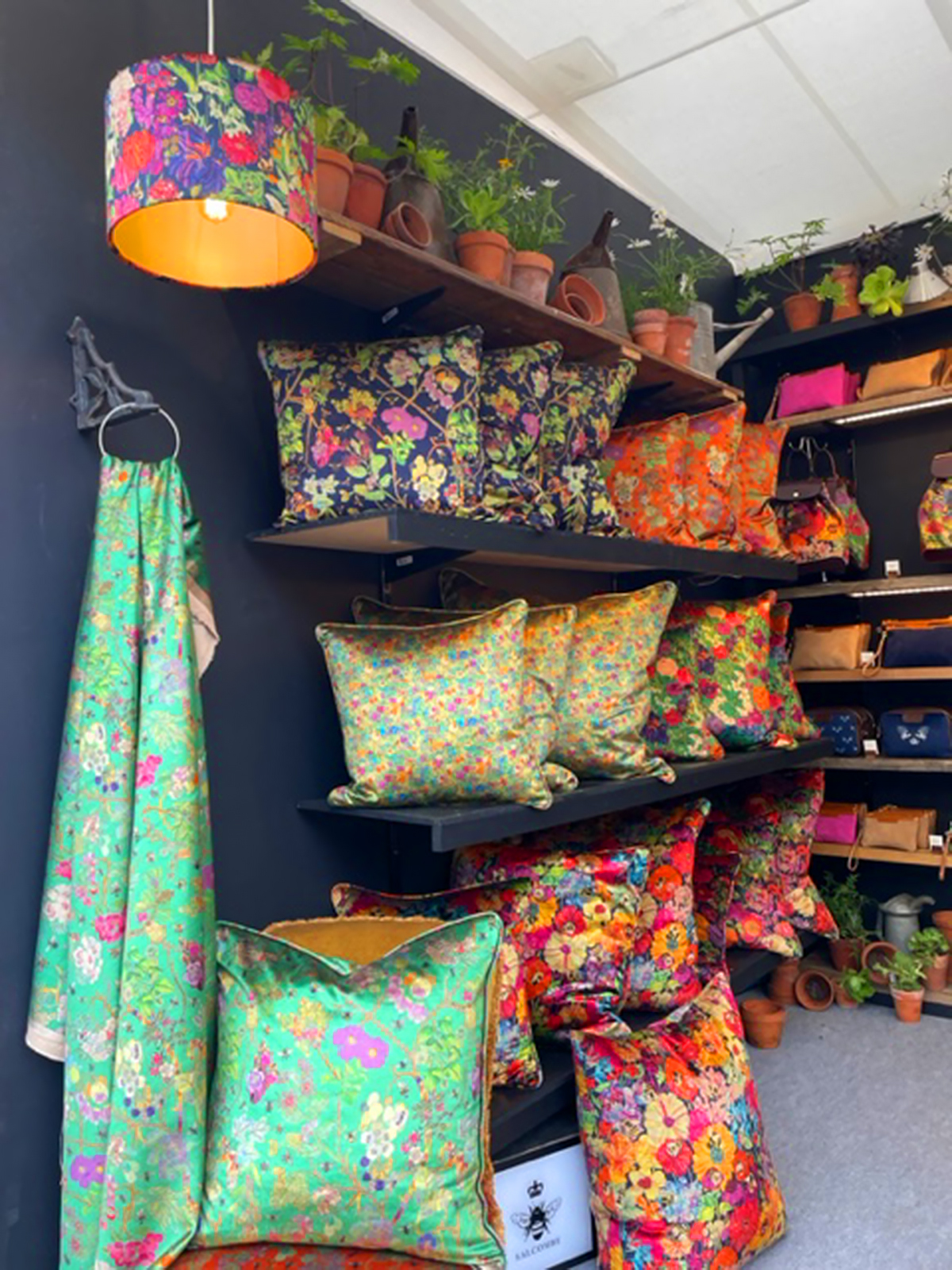
What’s Cebu got to do with the Chelsea Flower Show in London? One person. James Doran Webb (https://www.jamesdoranwebb.co.uk), an Englishman working with driftwood, has been displaying his artworks for several years. James collects cast-off driftwood and shapes them into beautiful animal shapes that find places in some of the most iconic gardens. Leaping horses, owls, reindeer, and the occasional dragon, James Webb’s creations are avidly collected by landscapers to add accent to gardens in all sizes, using cast-off wood, fitting perfectly with the sustainable element—something Mr. Webb has done quite well for the last decade.
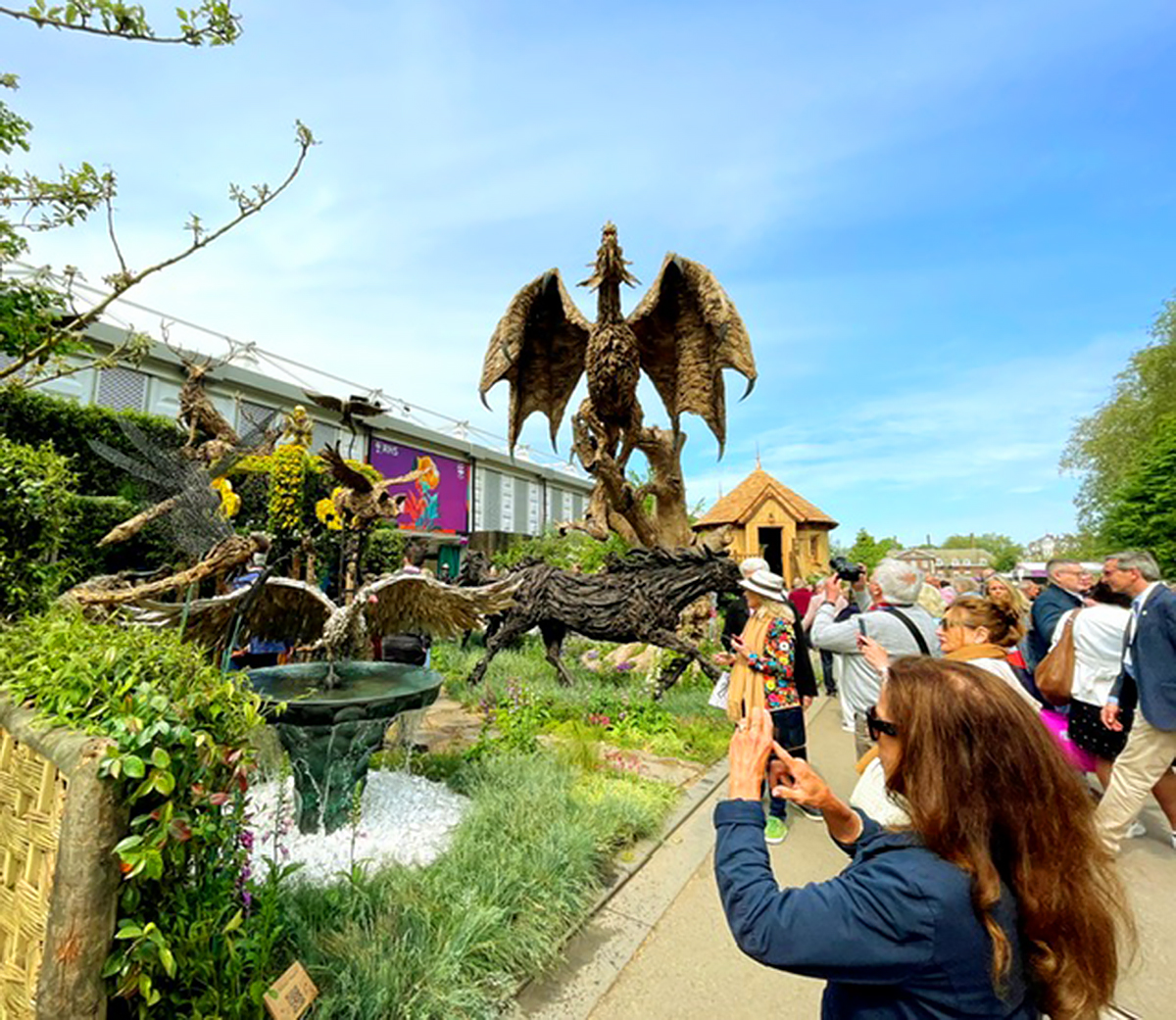
The impressive dragon of James Doran-Webb
***
The Philippine International Flower Festival will be held at the PICC in Manila from January 14 to 18, 2024. Watch out for more info from our website!
Leisure
Club Serena: A ‘Serene Luxury’ Experience in the Heart of Cebu’s Diving Mecca
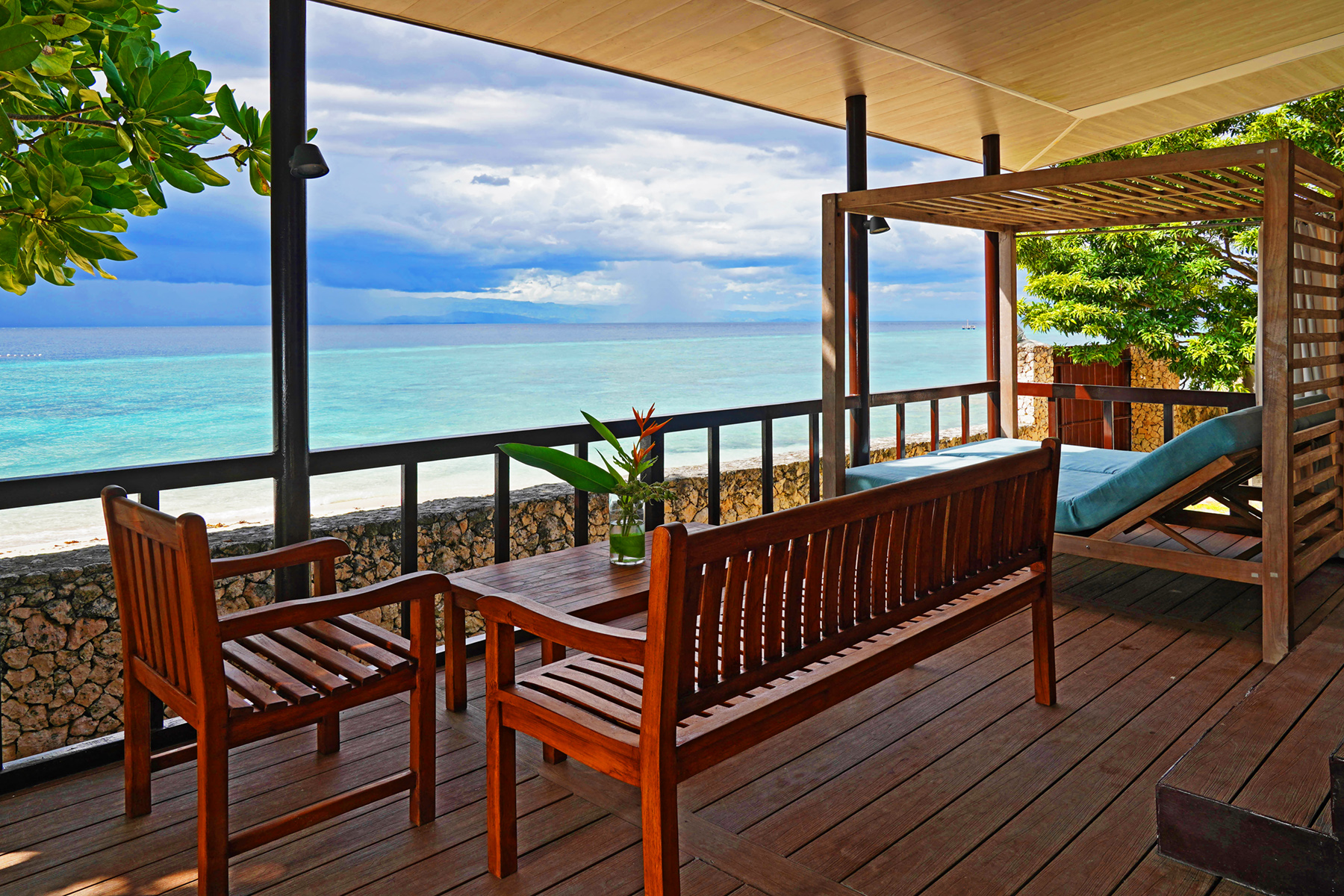
photography by GPA Art and Photography
A three-hour drive, or more, depending on traffic, the fishing town of Moalboal in the southwest of Cebu Island is an extremely popular destination for divers and weekenders who love the white sand and pink sunsets. It is also a favorite place to stay for expats looking for a laid-back life of endless coffees or cocktails.
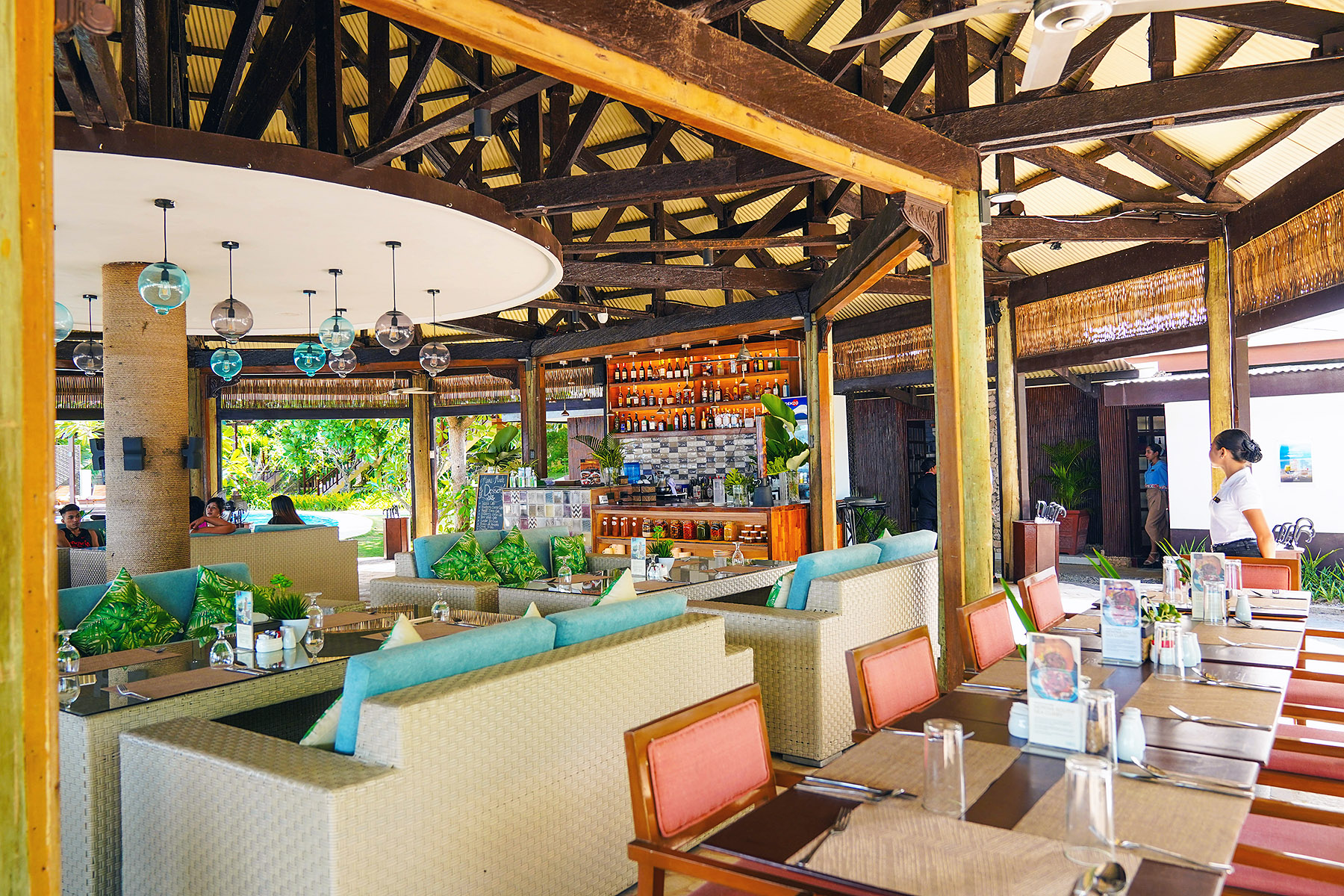
Thankfully, the big chain resorts haven’t discovered it and places to stay are mostly small family-run resorts. But if pampering is what you are looking for, there is only one hotel to book in Moalboal. Club Serena Resort is a 1.7-hectare beachfront property perched above coral rocks, presenting a unique union of luxurious accommodations and a host of activities to be enjoyed. This hidden gem is reached through a dirt road away from the main highway. Fronting a wide swath of white sand beach, it is an easy walk past several smaller resorts to reach the main town.

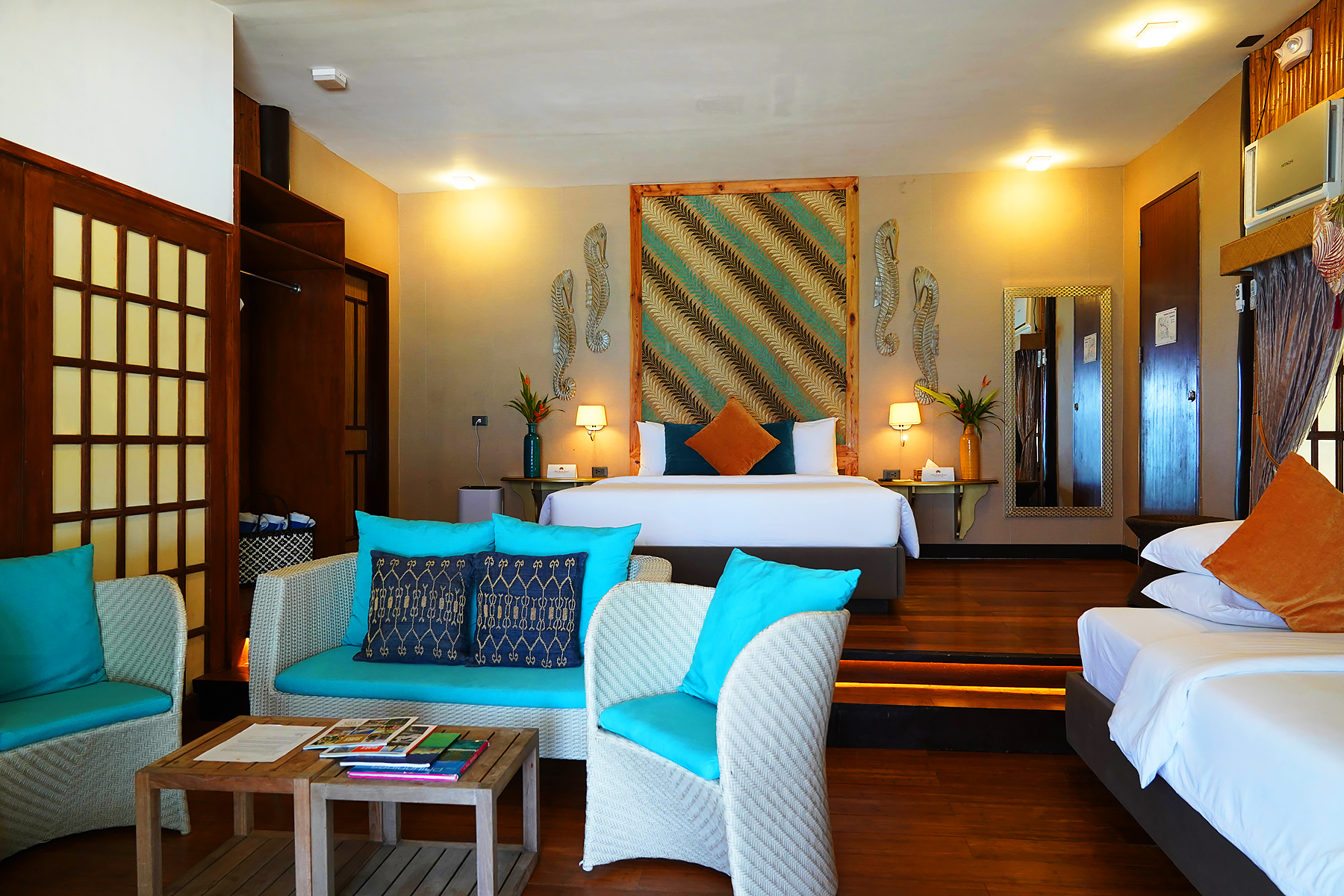
Recently renovated by noted architect James Jao, the new Club Serena has 17 rooms, three swimming pools, a restaurant, and a beachfront event space, all designed with modern Filipino aesthetic. On the drawing board are more rooms to be added, an expansion of their modern dive shop, and their popular Kids’ Club program. Their food outlet, Mira, offers all-day dining, favorite among visitors and locals, as well as the growing expat community that has settled in Moalboal.

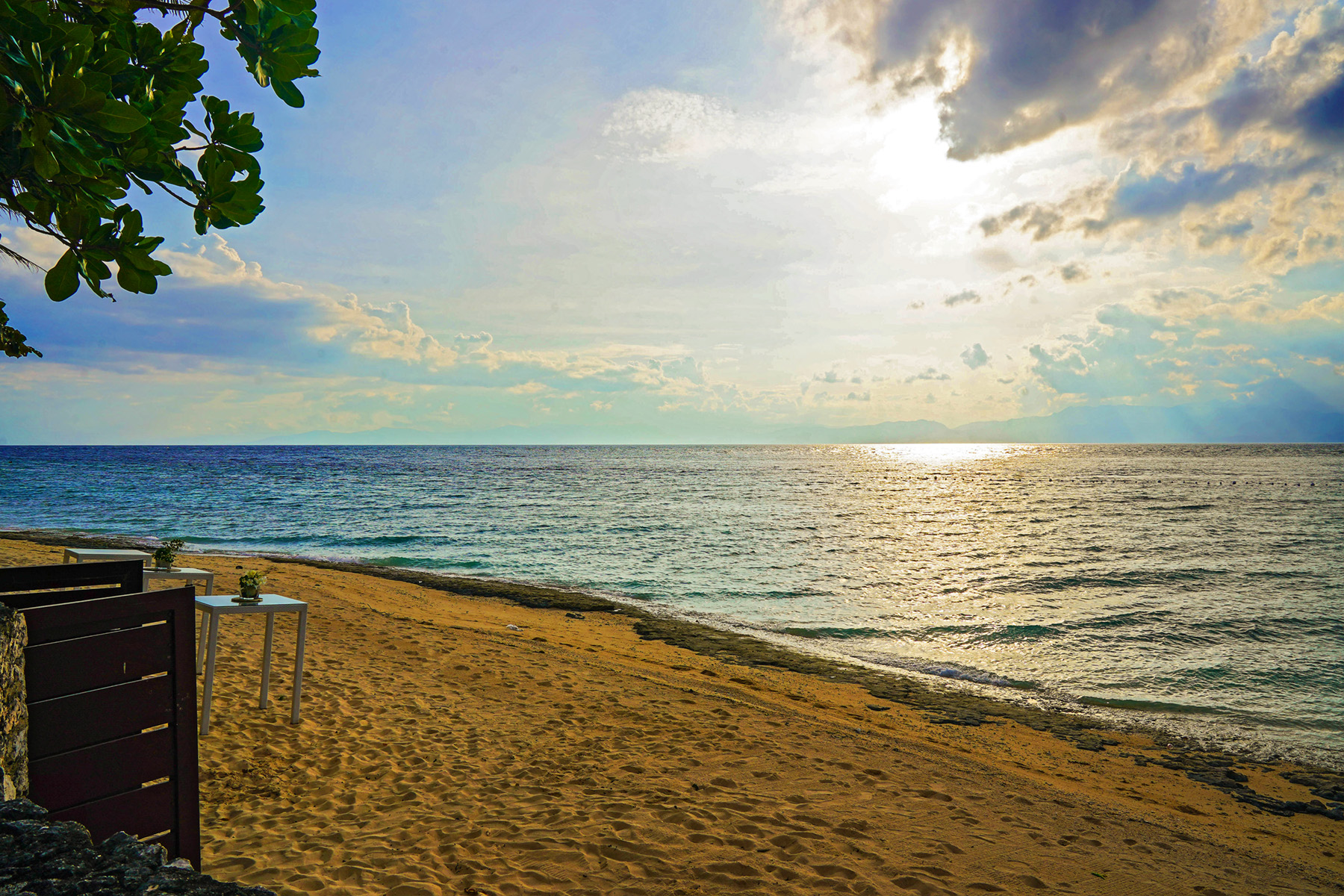
Club Serena offers diving courses for adults and kids by their resident operator, Seven Seas Aquanauts Phil. Corp, a PADI 5 accredited diving facility operating since 1988. For a complete list of the courses and their rates, please call (+63) 917.872.6367 or (+63) 905.459.5307.

The resort encourages above-water activities as well, and they have several paddle boards and kayaks available for guests to use.
For rates and more information, visit www.clubserenaresort.com or email sayhello@clubserenaresort.com or (+63) 917.872.6367 or (+63) 905.459.5307. You can also visit their Facebook page for updates.
-

 People2 months ago
People2 months agoThe Cardinals–an Amazing Gallery of Portraits on Cardinals in the Philippines by Artist Jun Impas
-

 QuickFx1 month ago
QuickFx1 month agoHill Station Baguio-Mitos Benitez-Yñiguez Raises the Bar with a Gastronomic Experience in a Cultural Heritage Building
-

 Style2 months ago
Style2 months agoFilippo Summer/Spring 2025 Menswear Collection-Fashion Designer Phillip Rodriguez Stays on Top of the Game
-

 People1 week ago
People1 week agoA Destination Wedding in Capiz; A Love Story in Focus
-

 QuickFx2 months ago
QuickFx2 months agoArt Beat–Maris Holopainen returns to the Original Qube Gallery Crossroads with a Smash Hit in Unscattered Voices
-

 Beauty & Wellness3 months ago
Beauty & Wellness3 months agoThe Lowdown on IV Drips–Dr. Victoria Jordan Sarmiento Opens Krowne Premiere Medical Aesthetics to Promote Overall Well-being
-

 Prime Target3 months ago
Prime Target3 months agoJamie Gellor–A Multihyphenate at the Intersection of Business, Beauty, and Wellness
-

 Events2 months ago
Events2 months agoSome Enchanted Evening–Marguerite Lhuillier hosts a Despidida Dinner for Eva Gullas in her Fabulous Post-Modernist Maria Luisa Mansion











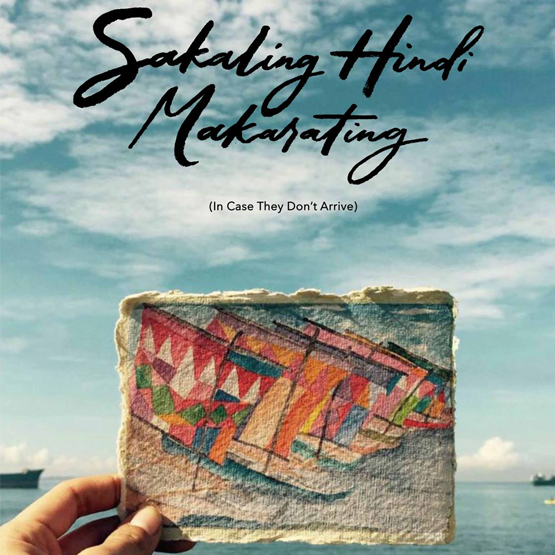





You must be logged in to post a comment Login